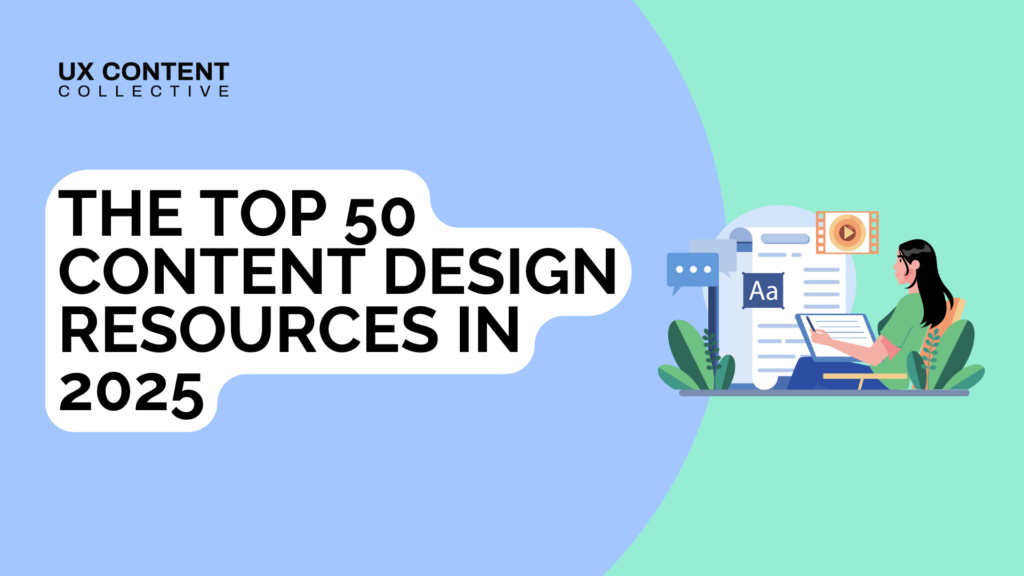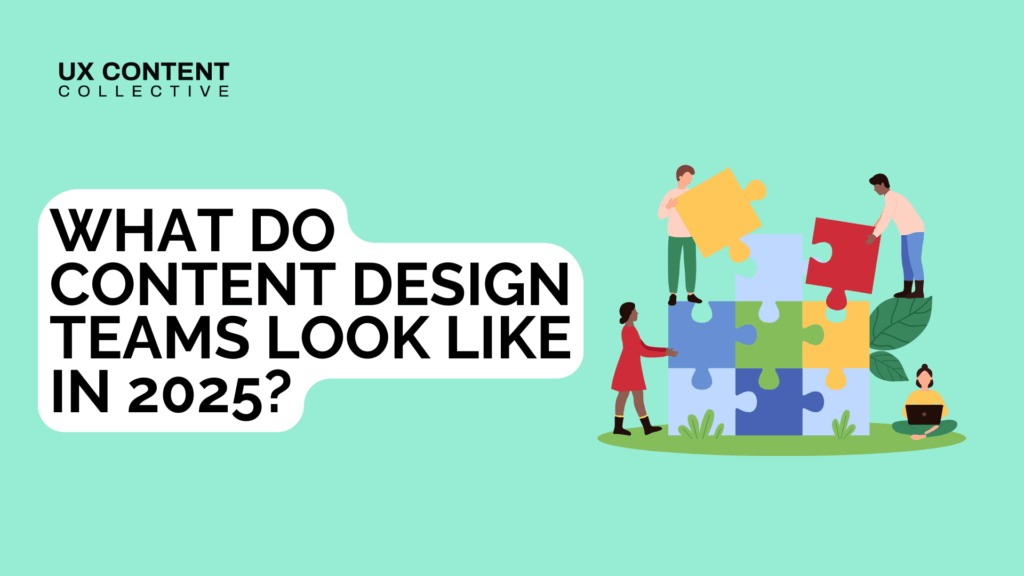
What do content design teams look like in 2025?

Patrick Stafford

Ready to advance your UX content skills?
Take the next step for content designers and UX writers: enroll in Advanced UX Content for Product.

I spend a lot of my time talking to both content designers and team leaders. None of the conversations we have are scientific (I don’t carry a survey around), but I do like to keep a pulse on what’s happening across a range of different teams, companies, countries, etc.
I could rattle off a listicle of all the different things to make it sharp and easy, but the truth is that in a tumultuous time different content design teams are taking different approaches. I want to try and summarize what’s happening across the industry as best as I can, with my limited experience and exposure.
So, take it all with a grain of salt. But some of these trends might resonate with you. All of these are things I’ve observed, or content designers / their team leads have told me.
Content design teams are hiring, but not everywhere
I think there’s an assumption that all companies are laying off content designers and everything’s on fire. Not quite the case. Most of the content design team leaders I speak to aren’t actually doing much of either, they’re trying to do as much as they can with the resources they have (more on that later).
If content design teams are hiring, they tend to be in two places: at some of the larger companies, and at companies that are experiencing significant growth. If you’re a mid-sized company then there isn’t a lot at the moment.
In those teams, new hires tend to be senior with quite a bit of experience. Before I started writing this article, I took a quick look at jobs available on LinkedIn. They all fit the two criteria I’ve outlined: large or growing companies (or areas), and senior roles:
- Netflix: Senior Content Designer
- Google: Content Design Manager
- Handshake: Senior Content Designer
- Zoom: Senior UX Writer
Principal, senior, manager, blah blah blah. It’s pretty clear we’re still in a situation where companies aren’t taking a chance on new talent, but they are hiring. Interestingly enough, banks and financial institutions have been hiring a bit more lately, too.
What does this mean for you?
You really need to hit the ground running. Teams expect more of everyone right now. You need to connect your decisions to business goals and just ultimately be aware of what’s going in the organization. Think strategically as much as possible.
Money is very, very tight
Among all the content design team leaders I speak to, there’s a consistent thread right now: money is very hard to come by. Whether it’s for tools or training, the number of decisions that have to be made are greater than they were a few years ago. Companies are simply more conservative due to higher interest rates, but there’s also more going on.
Companies have shifted their investment from design to engineering. AI takes a lot of effort and skill, and that means if you’re not connecting anything you’re doing to that area then it’s just harder to get money.
I’ve spoken to a team lead in the past year who said that they were struggling to get approval for a few hundred dollars to spend on tools. This is a multi-billion dollar corporation.
What does this mean for you?
Business cases need to be super airtight and strong. If you cannot connect everything you’re doing to the bottom line, it’s going to be much harder to approve.
When content design teams do hire, they take longer
This isn’t universal, I’ve spoken to quite a few people who have managed to land roles with only a couple of rounds. But I’ve also spoken to many who keep getting drawn back again, and again, and again.
These interviews aren’t necessarily asking for anything different or new. It’s just that when attention on investment is high, companies want to make sure they’re getting everything they can out of you (for better or worse). They want to be sure.
What does this mean for you?
Be prepared for endurance as much as performance. You may need to deliver consistent answers to overlapping questions, showing skills and your ability to navigate a marathon process without losing steam.
An AI skills gap is emerging
This tends to happen whenever new tools or resources are made available: the companies with the most money, time, and resources spends effort on training their staff on how to best use them. Right now content designers are being split into two camps: those whose employers are subsidizing their learning, and everyone else.
This has led to a skills gap. Among the more fortunate content designers, teams are working on major projects like embedding design systems with content guidelines and distributing them as chatbots to entire teams. Others are working on AI infrastructure like evaluation, and are helping AI engineers implement feedback into system messages and training data structures.
Among a very select group of content design teams, content designers are seen as important AI colleagues. Content designers in these teams understand context engineering, MCP servers, and other complex systems.
Other content design teams, however, are not as lucky. Many inexperienced teams are still relying on learning how to prompt and are walled off from any AI development at all. If you’re a solo content designer or UX writer, your resources might be even more limited.
Over time that skills gap is going to get even bigger, and it’s going to become harder and harder for people at smaller organizations to be exposed to more sophisticated AI training.
What does this mean for you?
It’s impossible to be across everything, and I wouldn’t recommend it. But I’d focus on a few things:
- Understand context engineering. Learn what it means to create an environment of context vs. putting everything in a single prompt
- Learn how to make your design system documentation machine-readable and dynamic
- Experiment with different tools as much as possible
- Find out who’s in charge of AI tools in your organization and get involved. Ask to evaluate output or contribute to system message revisions if you can.
Content design teams are powering along
I really hate to portray this as a definitive take on what’s happening. You might read this and think “huh?” but again, this is just a snapshot based on a range of conversations. Your mileage may vary.
Overall, what I see is the shape of work is changing. Some days that feels frustrating, especially if you’re stuck in a team with fewer resources or fewer chances to grow. Other days it feels exciting, because content is showing up in new conversations that would’ve been unthinkable a few years ago. (This gels with the results of our content design salary survey earlier this year – sentiment is pretty split.)
That’s the reality most people I talk to are living in right now: a mix of uncertainty and opportunity, depending on where you sit.



